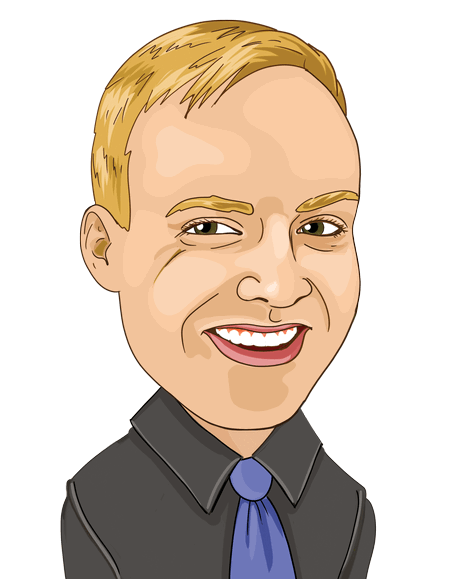

Summary
- A new Peterson Institute for International Economics policy brief revisits the relationship between vacancy rates and the unemployment rate.
- It finds when vacancy rates drop, as now, the unemployment rate always increases. This means the Fed’s goal of reducing labour market tightness without increasing unemployment is highly unlikely.
- The paper also estimates the natural rate of unemployment, which they found has increased from 3.6% to 4.9% during the pandemic. So, to dampen wage and price inflation, the Fed will need a relatively large increase in the unemployment rate.
This article is only available to Macro Hive subscribers. Sign-up to receive world-class macro analysis with a daily curated newsletter, podcast, original content from award-winning researchers, cross market strategy, equity insights, trade ideas, crypto flow frameworks, academic paper summaries, explanation and analysis of market-moving events, community investor chat room, and more.
Summary
- A new Peterson Institute for International Economics policy brief revisits the relationship between vacancy rates and the unemployment rate.
- It finds when vacancy rates drop, as now, the unemployment rate always increases. This means the Fed’s goal of reducing labour market tightness without increasing unemployment is highly unlikely.
- The paper also estimates the natural rate of unemployment, which they found has increased from 3.6% to 4.9% during the pandemic. So, to dampen wage and price inflation, the Fed will need a relatively large increase in the unemployment rate.
Introduction
The US labour market has been, and still is, incredibly tight. At the start of the year, there were 7.3mn fewer workers in employment than predicted pre-Covid – roughly 4% of the workforce. This pushed demand-side labour market measures, such as vacancy and quit rates, to record highs, which subsequently supported wage growth of over 7%.
These developments in the labour market are vital to the state of the economy. Former Bank of England MPC member David Blanchflower found successive declines in employment and increases in unemployment, alongside significant drops in consumer sentiment, were enough to predict a recession.
So far, large declines in consumer sentiment have not been followed by a deterioration in the labour market. However, the vacancy rate has reversed from its peak in recent months, with the latest readings for June showing 6.5% – down from its March peak of 7.2%. What does this spell for unemployment and the Fed’s chances of a soft landing? A new Peterson Institute for International Economics (PIIE) policy brief, co-authored by Oliver Blanchard and Lawrence Summers, helps us find out.
Labour Market Slackness and Wage Growth
Price growth is fuelling wage growth, and a concern is this will feed back into further inflation if prices do not normalise soon. Moving against the Fed is a very tight labour market. According to Larry Summers, this tightness is best captured through demand-side measures, such as vacancy or quit rates, which are now at historical highs (Chart 1).

Using these two measures of labour market slackness, the implied unemployment rate is currently below 2%, far lower than the actual rate of 3.5%. This in turn is causing a very large rise in wages, which, back in February before the bulk of the Fed’s rate hikes, were predicted to continue rising through 2023 (Chart 2).

This is significant for two reasons. Firstly, if the unemployment rate moves to 4% or higher with wage growth above 5%, the probability of recession based on historical data is 100%. Second, services CPI is highly correlated to wage growth. Therefore, persistently higher wages could keep a large part of inflation elevated for some time – so there is an assumption that the labour market must cool off to reduce price growth.
The Beveridge Curve
The Beveridge curve is a relationship between the unemployment and vacancy rates. To reduce inflation, Fed officials hope they can reduce labour market tightness through a decrease in vacancies but keep the unemployment rate unaffected, thereby softening the economy’s landing.
The PIIE paper is sceptical. To explain this, they graph the vacancy rates against the unemployment rates since 2000 (Charts 3 and 4).

There are two key relationships in Charts 3 and 4. First, is the relationship between the vacancy rate, unemployment rate and level of economic activity (the straight black line). The ratio of vacancies to the unemployment rate increases when economic activity increases. In other words, in a more prosperous economy, there will be more job vacancies as firms look to grow, or there will be fewer people unemployed.
Second is the convex relationship between the vacancy rate and the unemployment rate (the bowed black line). This is the Beveridge curve, which captures the matching process happening in the labour market. The more jobs needing workers, or the more workers looking for jobs, the more hires there will be, which is characteristic of a better job-matching environment.
Since 2021, the US has been recording data in the top left of Charts 3 and 4. This is characteristic of a labour market in which businesses have found struggled to match with workers, and there have been fewer workers looking for jobs, i.e., a very tight labour market. These datapoint are extreme outliers, therefore leading to strong wage growth.
A Rise in the Natural Rate of Unemployment
Now, the relationships described above can move (Chart 4). For example, higher economic activity rotates the black line left. We have seen this over the last couple of years, and it helps explain why we shifted from the green dot at the height of the pandemic to the blue dot in March 2022. The higher economic activity, the more jobs there are per worker, and the fewer workers there are per job.

The Beveridge Curve can also shift (Chart 5). This happens if it is harder for a firm to match with a worker (i.e., a fall in matching efficiency) or if there are more gross hires (i.e., a rise in labour allocation). Gross hires depend on the number of vacancies firms post and the number of workers looking for jobs (could be reallocations from one job to another).
Clearly, the Beveridge curve has shifted outwards since the pandemic. All the datapoints since April 2020 are outliers relative to the previous 19 years. The authors argue this has occurred mainly from a drop in matching efficiency, which may be due to the smaller employment pool post-Covid.
This outward shift in the Beveridge curve is, the authors think, characteristic of a change in the natural rate of unemployment. Vacancy rates are not typically used to calculate the natural rate but should be in their opinion. This is because what matters for wage determination (and by implication for the determination of labour market equilibrium) is how easy it is for firms to hire workers versus how easy it is for workers to find jobs; both depend on the ratio of vacancies to unemployment
So, using the unemployment rate and vacancy rate, they estimate that the natural rate has increased from 3.6% to 4.9% since the pandemic. This means that the actual unemployment rate of 3.5% is significantly below the natural rate, indicating an overheating economy. In other words, for wage growth to subside, we would need a far higher unemployment rate than now – bad news for the Fed.
Vacancy Rates, Unemployment, and the Risk of Recession
Worse news for the Fed is that vacancies have never declined meaningfully without unemployment also falling. Since the 1950s, after every peak in vacancies, there has been a significant increase in the unemployment rate within two years (Chart 6).

On the dynamics, the vacancy rate typically declines faster initially than the unemployment rate increases. After 6 months, the vacancy rate usually drops 12% from its peak, while the unemployment rate barely changes.
Historically, the unemployment rate then accelerates higher over the next 6 to 18 months: After one year, the unemployment rate is, on average, over a fifth higher than when vacancy rates peaked. After two years, it’s 50% higher.
Looking at the current vacancy and unemployment rates more closely, the former has already dropped 10% since March, with no change in U3 (Chart 7). Projecting historical events forward, we should expect U3 to start increasing from August, reaching 4.4% in March 2023 and 5.3% in March 2024. However, in some instances (February 2000 and 2002) the unemployment rate doubled over two years, meaning a figure of 7.2% could also be feasible.

Bottom Line
The paper has two conclusions. First, any declines in the vacancy rate are always followed by a rise in the unemployment rate. With the vacancy rate already starting to fall, the unemployment rate may follow.
Second, the natural rate of unemployment has increased. So, to tackle wage inflation and therefore headline inflation, the Fed may need unemployment to rise significantly. Any time in history when wages were growing above 5% and the unemployment rate was above 4%, the US has entered recession – so much for that soft landing…
Sam van de Schootbrugge is a Macro Research Analyst at Macro Hive, currently completing his PhD in international finance. He has a master’s degree in economic research from the University of Cambridge and has worked in research roles for over 3 years in both the public and private sector.
